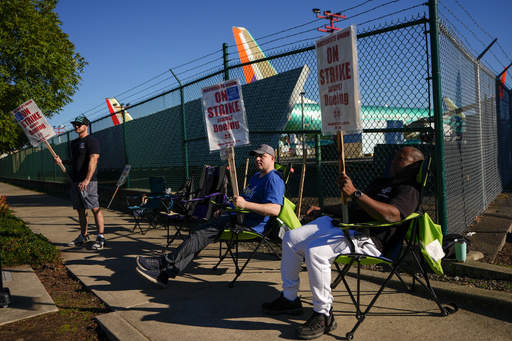
WASHINGTON – This Friday marks an important moment for Americans as they await the October jobs report from the Labor Department, which will provide insight into the economy just four days before Election Day. However, this report is expected to be influenced by the fallout from recent strikes and hurricanes that temporarily affected many workers’ employment statuses.
Forecasts from various experts predict that the U.S. added nearly 118,000 jobs in October. This figure, while reasonable, is notably lower compared to the impressive addition of 254,000 jobs that occurred in September. Economists have warned that the impacts of Hurricanes Helene and Milton, in addition to ongoing strikes such as the one involving machinists at Boeing, significantly suppressed job growth during October. Lydia Boussour, a senior economist at EY, anticipates the government will report even lower gains, estimating only 70,000 jobs were added, with natural disasters and strikes potentially subtracting as many as 111,000 jobs from the total payroll count.
Boussour expressed in her commentary that the data from October would be unclear, stating, “We believe the true underlying pace of job growth was likely around 170,000 in October.” Moreover, the unemployment rate is likely to remain steady at 4.1%, according to forecasts by FactSet.
These job statistics reflect a generally healthy employment landscape, albeit not as vigorous as earlier this year. When coupled with an inflation rate that has decreased significantly from its peak in 2022 to levels near those before the pandemic, the overall economic situation appears stable as Election Day approaches.
Economists have remarked on the robustness of the U.S. economy, which remains one of the strongest among advanced economies worldwide, demonstrating a surprising resilience to the high-interest rate environment. Recently, government data indicated that the economy grew at an annual rate of 2.8% in the last quarter, largely driven by consumer spending, which is the backbone of economic growth.
However, as the nation prepares to decide between former President Donald Trump and current Vice President Kamala Harris, many Americans express dissatisfaction with the economic climate. Despite significant reductions in inflation rates, frustration over elevated prices persists, with costs about 20% higher than pre-inflation levels that began escalating in early 2021.
The potential ambiguity in the October employment report could stir debate among Republican figures concerning the legitimacy of government job statistics, especially if the numbers exceed expectations. For instance, Senator Marco Rubio has previously dismissed the unexpectedly positive employment news from September as “fake,” citing skepticism regarding the authenticity of such reports.
Nonetheless, mainstream economists do not share this viewpoint. Alternative economic indicators, such as the number of unemployment benefit claims — data primarily sourced from state reports — continue to suggest that the job market remains robust.
With inflation trending downward, the Federal Reserve is poised to reduce its benchmark interest rate for the second time this month, with further cuts likely in December. The Fed’s initial series of 11 rate hikes over the past two years successfully mitigated inflation without triggering a recession, and these forthcoming reductions are expected to lower borrowing costs for households and businesses in the long run.
On another note, indications of a slowdown in the job market have emerged. The Labor Department reported that employers posted 7.4 million job openings in September, although this figure represents the lowest count since January 2021, despite exceeding pre-pandemic postings. Additionally, approximately 3.1 million Americans left their jobs in September, marking the lowest figure in over four years. A decline in resignations often suggests that workers are losing faith in their prospects for securing better employment opportunities elsewhere.
